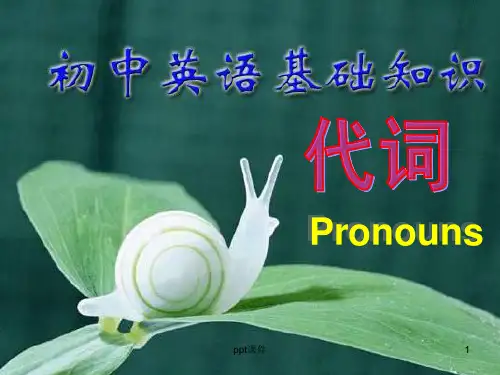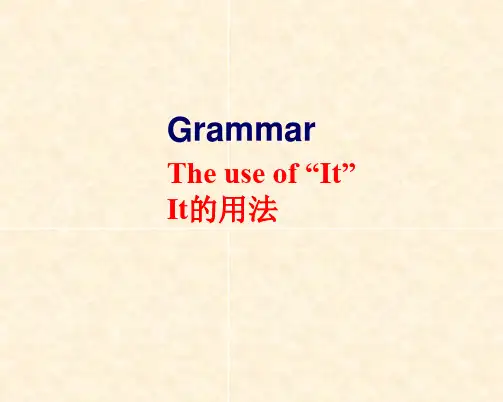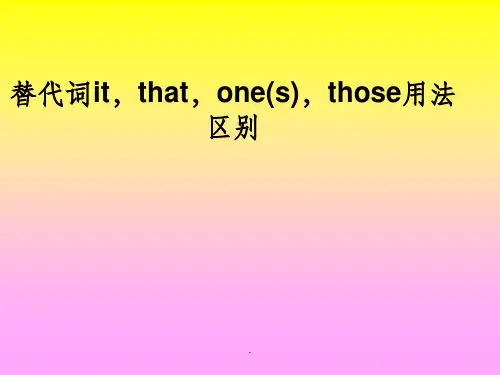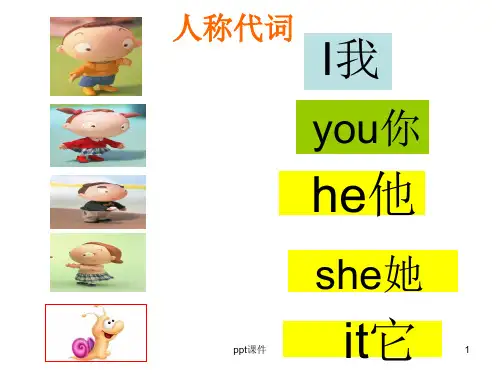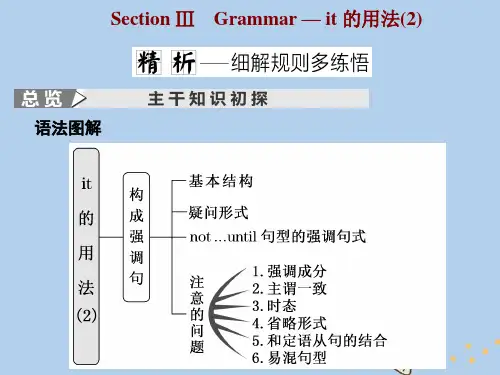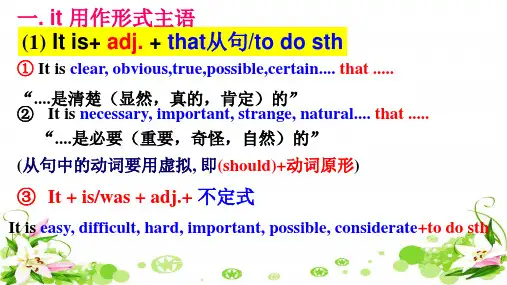知识3 反身代词
1.反身代词可作宾语:常在 enjoy, teach, hurt, behave, introduce(介 绍)等动词后作动宾和by, for, to, in, of等介词后作介宾。 ►He is teaching himself English. ►She was talking to herself. 2.反身代词可作同位语:用于加强语气,强调"亲自,本人,亲身"。 ►He himself went to the bank. 3.反身代词可作表语:常用于be, feel, look, seem等系动词后作表语,表 示身体或精神状态。 ►I'm not myself today. ►I am feeling myself again.
知识5 some和any
some常用于肯定句,any则常用于否定句和疑问句。 ►Some of the milk has gone bad. ►I need some stamps. Are there any in your bag? 特别提醒 any还可用于肯定句,表示"任一"。 ►I'll take any you don't want.
知识2 物主代词
物主代词可分为形容词性物主代词和名词性物主代词。 1.形容词性物主代词相当于形容词:置于名词之前,作定语,不可单独使用。 ►Those people are my schoolmates. 拓展延伸 含形容词性物主代词的常用结构: 1.形容词性物主代词+own(+名词) 某人自己的(……) ►I have my own room. ►I need a room of my own. 2.形容词性物主代词+v-ing,可作主语或宾语 ►His being ill made his mother worried.
